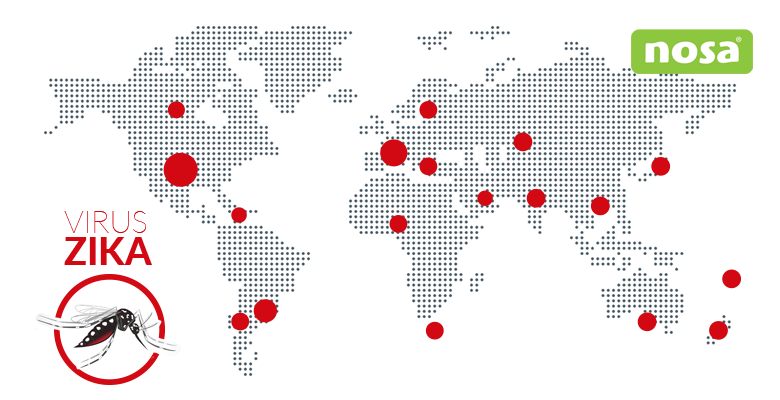The Aedes mosquito responsible for the transmission of the Zika virus is tiny, no larger than 7 millimetres, but its females are of concern to authorities worldwide because of the transmission of diseases that are progressively spreading.
At present, WHO is concerned about to curb the spread of the virus around the world and also looks at Zika's link to thousands of cases of microcephaly. in children, particularly in Brazil.
Behaviour of the mosquito that causes the Zika virus
This insect often nibbles throughout the day -It is a pest that adapts easily to the environment in which it acts, but especially in the early morning and late afternoon, and lives both indoors and outdoors. It is a pest that adapts easily to the environment in which it operates.
As we have seen, human beings are affected above all for bites of the infected Aedes mosquito femalesThe mosquitoes will contaminate themselves by sucking blood from people who have already contracted the virus. Transmission occurs when these mosquitoes inject their saliva and transmit up to four different types of diseases: Zika, dengue, chikungunya or yellow fever.
Ovation of these insects occurs in containers holding stagnant water.. It is therefore necessary to eliminate stagnant water if there is a risk of mosquito invasion. It is also a good idea to use insecticides and repellents on skin and clothing.
The normal method of stinging occurs when the mosquito arrives at the back of the person and attacks on the ankles and arms.. Although they often bite humans, domestic animals such as dogs can also be bitten.
Most frequent symptoms
The most frequent symptoms of this type of transmitted disease are the following fever and skin rashes. In terms of time of onset, these symptoms can appear from the third day to two weeks after contracting the disease.
Other common symptoms include conjunctivitis, pain in the locomotor system, muscles and joints, and general malaise, including headaches and headaches, nausea and vomiting. However, even if Zika infection has occurred, not everyone has these symptoms. Some experts claim that signs of infection occur in one in four people.
Forms of transmission
The most common method of transmission is by mosquito bite called "Aedes aegypti" that is infected.
Other routes of transmission that have been detected, although statistically to a lesser extent, are the sexual and blood-borne transmission. There are doubts about the transmission of the virus from mother to child in pregnancy, and also about the possible effects that diseases derived from these viruses can cause in the foetus.
What to know about Zika virus in terms of prevention and treatment
A vaccine against Zika virus has not yet been developed. Therefore, the main preventive measures should be aimed at avoid contagion, especially the bite of the Aedes mosquito.
If there is a risk of bites, it is very useful to wear long sleeves, use repellents and sleep under mosquito nets.
Once the virus has been contracted, it is always advisable to consult a doctor to determine what action to take. commonly used anti-fever medicines, painkillers such as paracetamol, etc...
Geography of the virus
The virus is active in several Latin American countriesThis is the case in Colombia, El Salvador, Puerto Rico, and especially in Brazil, where fatalities have been reported. The Brazilian government has already approved significant budget allocations to combat the pest.
In Europe, the mosquito responsible for the spread of this virus does not find a favourable climate for its development, although already cases have been observed in Italy, the UK and Spain.
Entry of these mosquitoes and transmission of the disease is not easy to occur in Spain, but there have already been records of cases of infected people from Latin American countries.
Some interesting products on the market
In addition to the appropriate precautions, there are products whose application repels mosquitoes, as is the case of our mosquito repellent sprays that create a protective barrier on the skin and thus repelling the mosquitoes.
Another of our products NOSA is the mosquito repellent forte spray by NOSAThe efficacy of this product has been proven even in the most extreme climatic conditions in tropical areas. Its protective effect lasts up to 6 hours.
The efficacy of these products is supported by the Spanish Agency for Medicines and Health Products: The agency has recognised them as effective in preventing the Aedes mosquito from transmitting the ZIKA virus.







Leave A Comment
You must be logged in to post a comment.